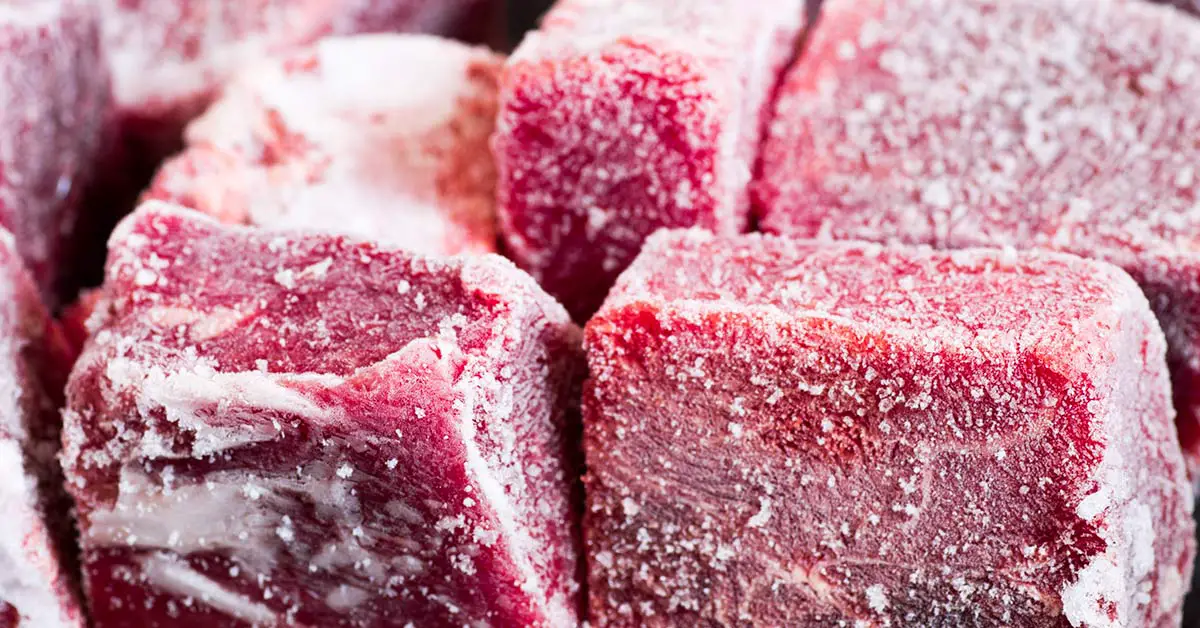When we think about the best advancements in technology, we might think of phones, airplanes, or even robots. However, no invention has improved daily living as much as the humble freezer. We use it so often but never consider what life would be like without it. In fact, because of how common it’s become, most people never learn how to use it properly, namely how long you can really freeze foods. Some folks freeze food they shouldn’t, or for too long, or throw out items before they have to.
Freezing food has become somewhat of a guessing game, but it doesn’t have to be. Using U.S. governmental sources, this viral chart explains how long you can freeze foods in one easy-to-read template. You could print it and attach it to your freezer for easy reference. Now there’s no need to examine long-frozen foods and hand them to family members asking, “Do you think this is still good?”
The Chart That Explains How Long You Can Freeze Foods
In addition to the storage times for each food, the chart adds a little information on how freezing works. According to the American Food Safety and Inspection Service, “Freezing keeps food safe by slowing the movement of molecules, causing microbes to enter a dormant stage. Freezing preserves food for extended periods because it prevents the growth of microorganisms that cause both food spoilage and foodborne illness.”
Read: 40 Food Charts That Might Change The Way You See Your Food
Freezing can preserve the quality of the food, but that could depend on how fresh it is when placed into the freezer. For that reason, it’s often best to freeze foods at their prime as opposed to just before they go bad. However, keep in mind that some foods lose their quality during the freezing process, such as milk, soft cheeses, and fruits with high water content. They could still be frozen, but be prepared for a slight difference in texture or quality. [1]
The good news is freezing doesn’t reduce any of the nutrients in the food. So don’t hesitate to freeze fruit and veggies for later.

How to Tell if Frozen Food Has Gone Bad
Packaging
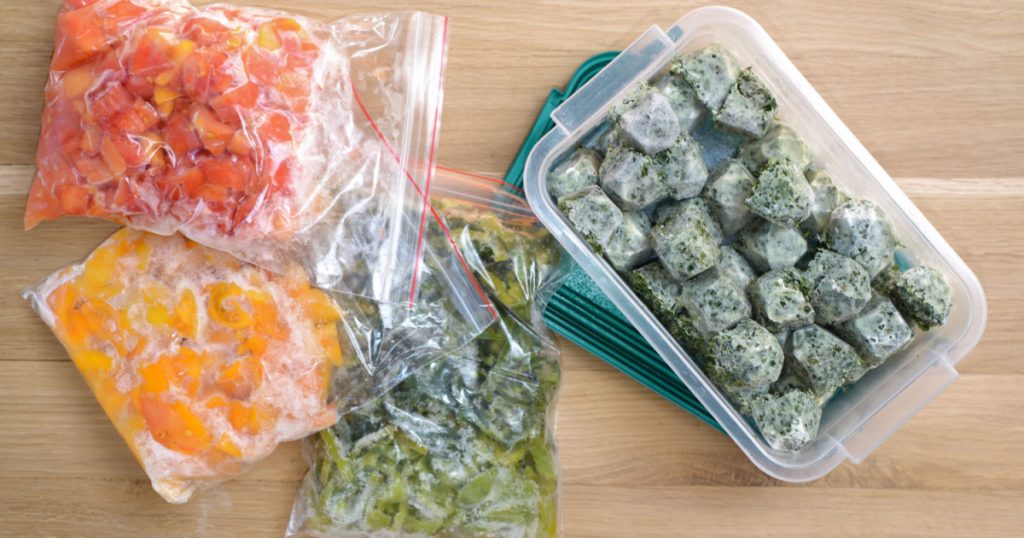
First off, it’s vital to ensure that frozen foods are packaged well. If a product has a hole or tear, be sure to wrap it over it. Direct exposure to the cold air could quickly diminish the quality and edibility of the food. If this happens, check for signs of spoilage, even if it’s before the food’s expiry date.
Freezer Burn
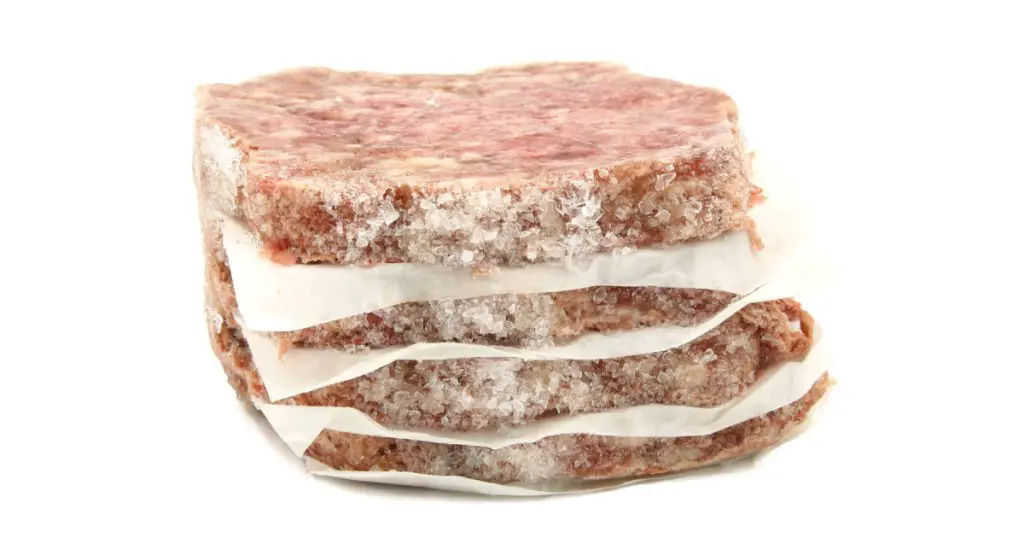
This spoilage could include freezer burn or discoloration. Freezer burn makes the food taste dry and looks like gray-brown leathery patches. Discard freezer-burned parts of the food before eating it. If food is heavily freezer-burned, it’s best to discard the entire thing.
Read: What Food Product Came Out the Year You Were Born?
Discoloration
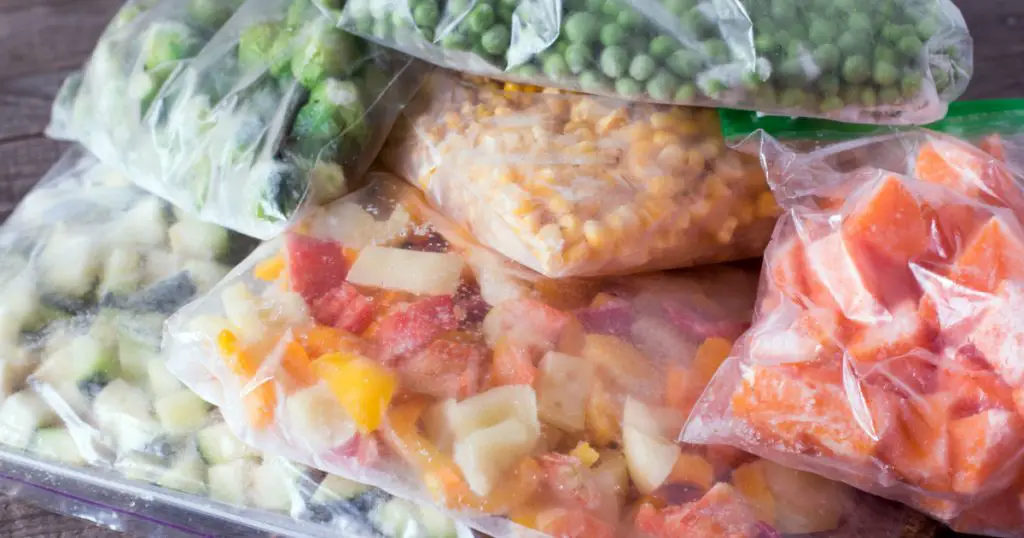
Discoloration happens from freezer burn, lack of oxygen, or being stored for an abnormally long time. For instance, red meat could turn brown, the bones in the chicken become dark, and frozen vegetables and cooked foods look dull in color. Properly wrapping foods and storing them for the appropriate amount of time can avoid this.
Bad Smell
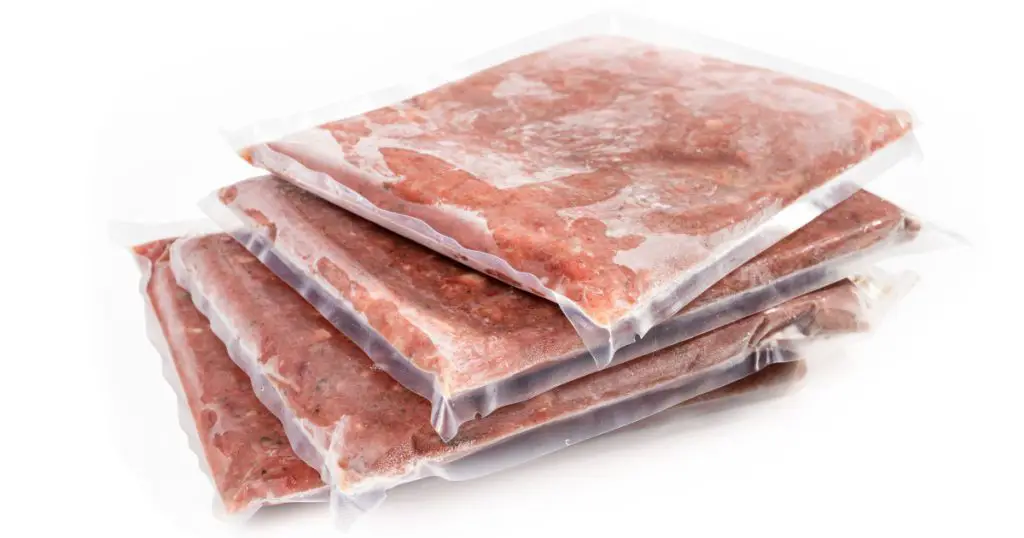
Additionally, if food smells off, discard it. Unfortunately, the freezer isn’t foolproof, especially when it opens and closes constantly. [2]
The above chart helps you know how long you can freeze foods to simplify this checking process.
How to Safely Thaw Frozen Food
There are three safe ways to thaw food:
- In the refrigerator
- In a bowl of cold water
- Using the microwave
On The Counter
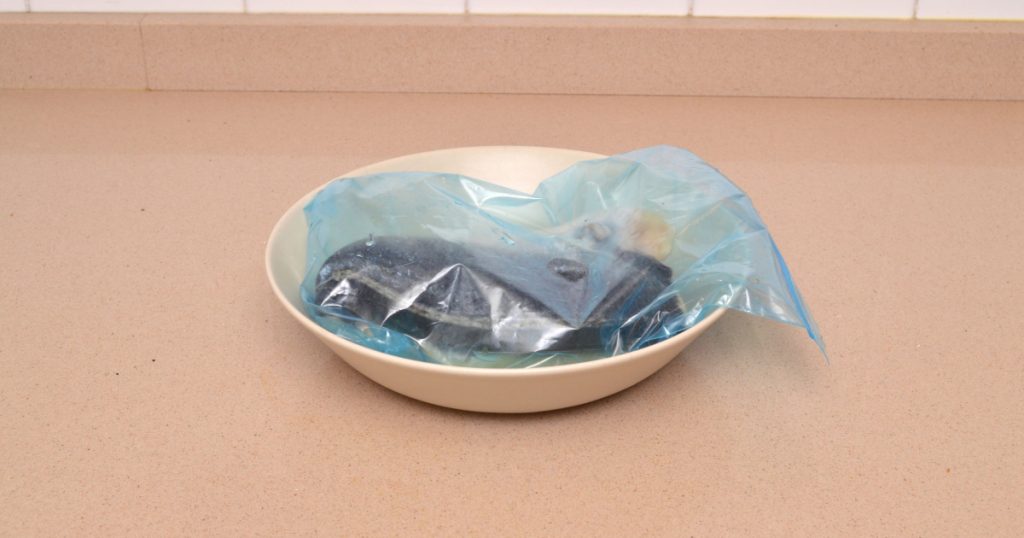
Thawing food on the counter is not recommended and could make the food unsafe to eat. It’s advisable to thaw at a consistent temperature, such as in the three options above, to avoid this. [3]
Read: People Share Some of the Most Controversial Food Opinions
In The Fridge
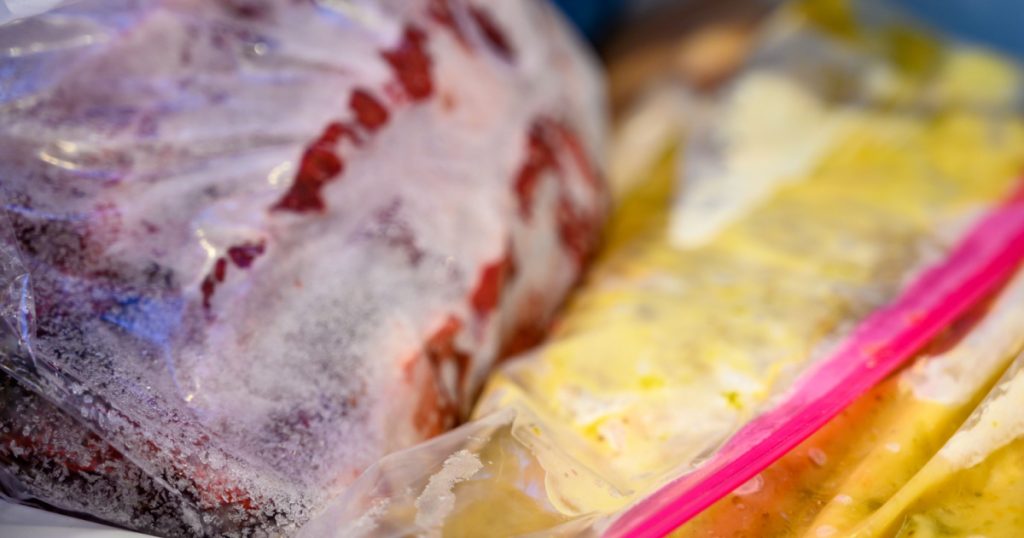
In the fridge, thawing could take overnight or a couple of days, depending on the food and how large it is. Unfortunately, this method involves thinking ahead, which many people don’t do until the last-minute panic of “what are we having for dinner tonight?”
In Water
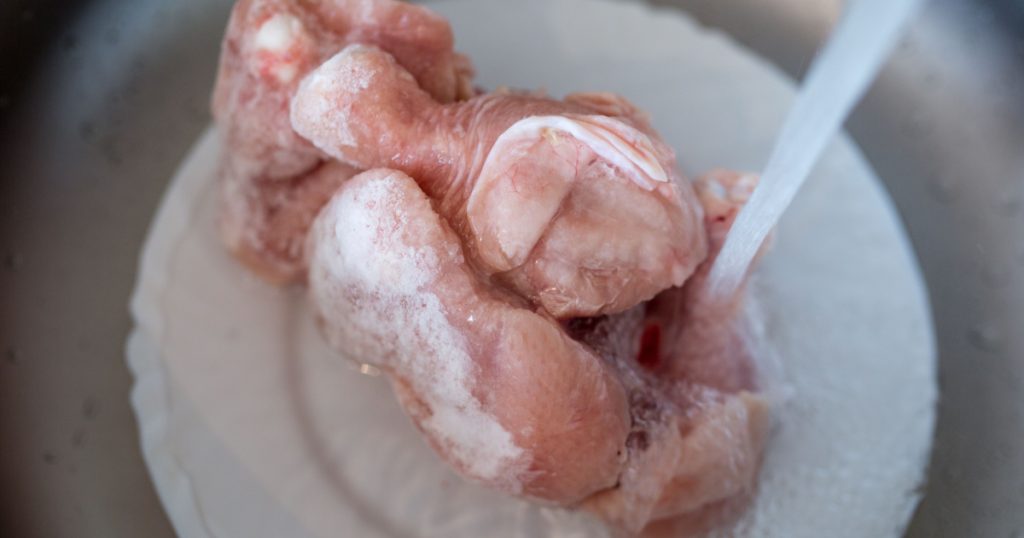
In those cases, place the food in a large bowl and fill it with cold water. Change the water every 30 minutes until the food is thawed. Then cook it immediately.
In The Microwave
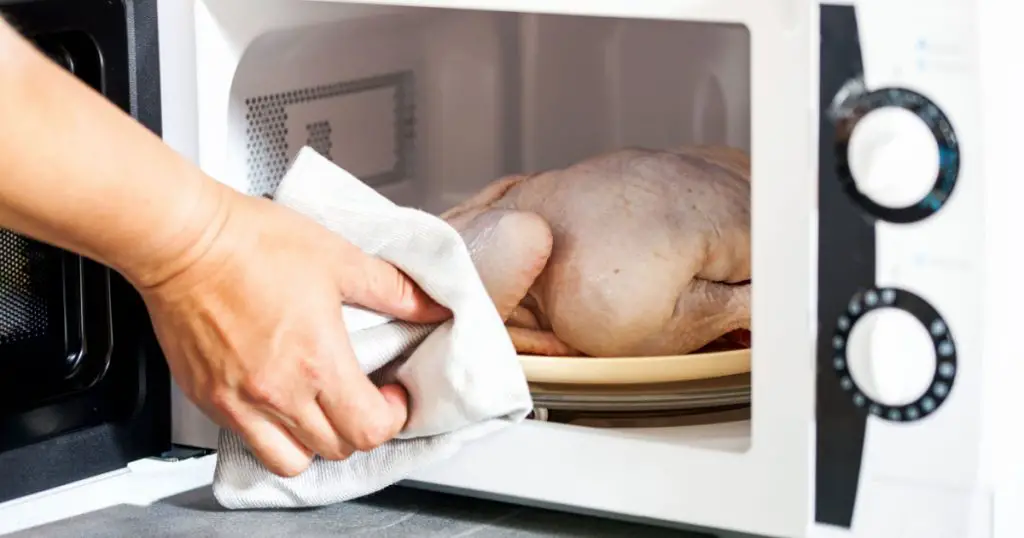
An even faster method is the microwave. However, be prepared to cook right after because the microwave could warm and even cook parts of the food as it thaws.
Things To Remember
A perk of the fridge method is that the food would be safe to refreeze since it remained cold. There may be a loss of quality because of the moisture lost during the thawing. However, don’t refreeze foods that were left outside of the fridge for over two hours.
Keep in mind that some foods could be cooked while they are still frozen. They will need a longer cooking time to ensure that the center is properly cooked. Referencing the chart eliminates the need to guess how long you can freeze foods and helps you plan meals in advance. Now that you know the limits of the freezer, so many new opportunities open up! Especially for the foods that last longer than you had originally thought.
Keep Reading: Man Transforms His Staircase Into Wine Cellar That Can Hold 156 Bottles
Sources:
- “How to store food and leftovers.” NHS. June 4, 2019
- “Freezing and Food Safety.” USDA FSIS. June 15, 2013
- “10 frozen food safety myths, debunked.” Today. Megan O. Steintrager. October 4, 2017
